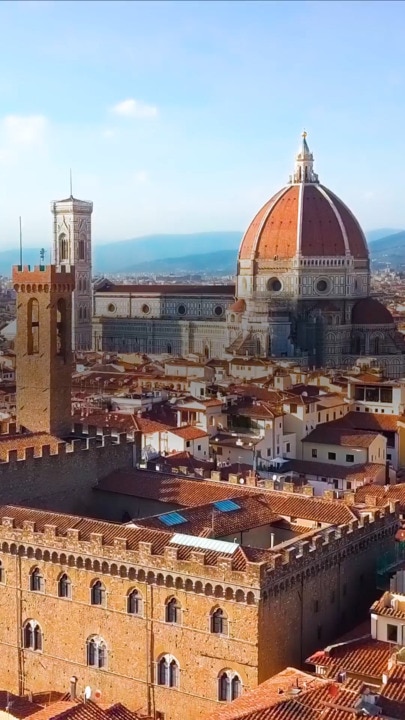I ditched Brussels's biggest attraction, and discovered a city full of hidden gems
Famous for its chocolate, moules-frites and historic architecture, Brussels is a city where exploring off the beaten path brings huge rewards.

Lifestyle
Don't miss out on the headlines from Lifestyle. Followed categories will be added to My News.
I’m three days into my visit to Belgium’s gorgeous, chocolate-scented capital when I realise I’ve yet to see the Grand Place, Brussels’ Unesco-listed marketplace, which dates back to the 12th century and is famous for its Baroque guildhalls.
In my defence, I have seen the Manneken Pis – the world’s strangest fountain – a naked, cherubic boy producing a stream of drinking water from his penis. Regarded as the city’s symbol and dating back to the 15th century, he’s also the world’s best-dressed fountain, with a wardrobe of a thousand outfits, ranging from rugby kits to the doctor’s gown he dons for World Cancer Day.

But as I dodge tourists clamouring for close-ups of the statue’s thirst-quenching nether regions, I ponder how a peeing toddler ended up being the star of the show when there’s so much else to see in Brussels. What’s more, exploring further afield is easy. I’ve based myself a few kilometres – and a short metro ride – from its centre, at the Sofitel Brussels in the European Quarter, close to the chestnut tree-lined Léopold Park. Popular with visiting diplomats due to its proximity to the EU headquarters (which, being a Brit still slightly bitter about our withdrawal, I can’t help but sneer at), it’s a hotel filled with nods to the city. At its 1040 Restaurant, chef Gabriele Petrucci serves modern twists on Belgian classics (try the beer-drenched mussel casserole).
It’s also a stone’s throw from an accidental discovery infinitely more fascinating than the Manneken Pis. The Autoworld Museum isn’t your average motoring museum. Inside a cathedral-like aircraft hangar is one of the world’s largest car collections – one started by former mechanic Ghislain Mahy. Separate zones focus on everything from motor racing (exhibits include a Formula One car driven by Fernando Alonso) to concept cars (don’t miss the Audi made entirely from wood). Equally stunning is the gold leaf-adorned horse-drawn coach, complete with a tasselled sofa and wood-panelled exterior, once used for royal weddings.

The museum’s comic zone, with super-sized pages of stories about cars, is a nod to the Tintin series produced by Belgian cartoonist Georges Remi. And Rue des Sables’ fantastic Comic Art Museum is a brilliant place to learn not only about Remi and Tintin (who visited the moon long before Neil Armstrong, and the Nasa astronaut once signed a copy of the comic depicting this particular outer-space adventure). It’s unashamedly Insta-fabulous, with large cut-outs of comic book stars and speech bubbles I can pose next to, but it also delves much deeper. In the section focusing on those who’ve taken on tougher issues than lunar-loving dogs, I learn about Joe Sacco, the American comic book writer whose illustrated narratives tackled everything from the 1956 massacre of Palestinians in Gaza to war crimes in Bosnia.
Brussels’ food scene is equally multifaceted. A great way to peel back its layers is on an outing with Secret Food Tours, in my case one led by a local food lover called Manila. The tour focuses on local treasures – places such as Poechenellekelder, a cosy pub and former puppet theatre, hence the hundreds of mannequins hanging from the walls. The speciality is lambic beer – a sour ale first produced in the 13th century. I try a delicious cherry version produced by a brewery founded in 1822, anda Trappist beer with an ABV of 9.5 per cent.

Luckily, there are endless opportunities to line my stomach. At La Mer du Nord on Rue Sainte-Catherine, I tuck into this seafood bar’s speciality – shrimp croquettes, made with shrimps wrangled from the North Sea that morning. At Patatak, a famous friterie on Rue de la Bourse, we devour fries topped with carbonnade – a beer-infused beef stew flavoured with gingerbread (sounds weird, but it works).
The sugar high continues at Neuhaus Chocolates’ flagship store in Les Galeries Royales Saint-Hubert, one of Europe’s oldest covered shopping arcades. In the early 20th century, Jean Neuhaus was a pharmacist who made his medicines more palatable by covering them with praline. He soon realised that producing pralines containing chocolate, not medicine, was more lucrative.

The tour ends near Rue des Chartreux where Manila points out the historic townhouses with their ornate Neo-Renaissance façades. But for me, the star of the show is Het Zinneke, a sculpture depicting a dog cocking its leg against a bollard. It was created by Brussels-born artist Tom Frantzen as a lighthearted take on the Manneken Pis – a fitting tribute to a beautiful, brilliant city that never takes itself too seriously.
How to get to Brussels from Australia
Emirates and Qatar Airways fly from Australia to Brussels via Dubai. Brussels’ international airport is a 20-minute train ride from the city centre.
Where to stay in Brussels
Double rooms at the Sofitel Brussels Europe start from $240, on a B&B basis. Next to the buzzy Place Jourdan, it’s just a short metro ride from the city centre. sofitel-brussels-europe.com

Best things to do in Brussels
Many museums, restaurants and galleries close on a Monday, so check opening times before planning your itinerary.
What language is spoken in Belgium?
Belgium has three official languages: French, Dutch and German. French is the most widely-spoken language in Brussels.
The writer was a guest of Sofitel.
More Coverage
Originally published as I ditched Brussels's biggest attraction, and discovered a city full of hidden gems




